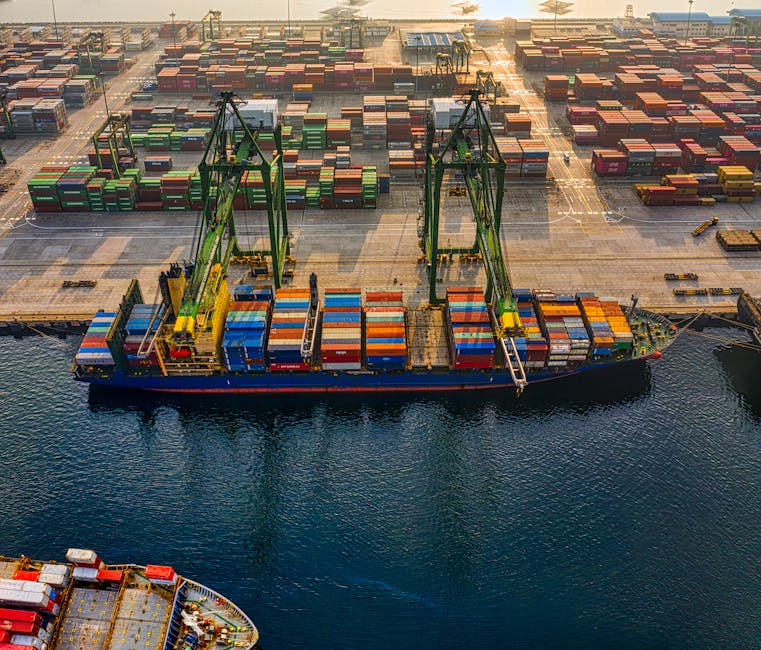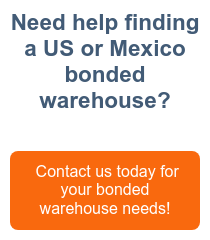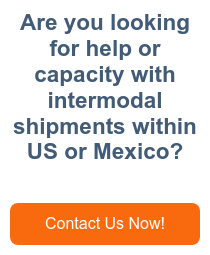Navigating the intricate world of international shipping demands a solid grasp of numerous terms and concepts. Whether you're a business owner aiming to expand globally, a logistics professional, or simply curious about the journey of goods across borders, a clear understanding of these terms is indispensable.
These international shipping terms are vital for anyone engaged in global trade. They not only ensure effective communication but also help manage the complexities of international logistics, facilitating the smooth and efficient movement of goods worldwide. From novices to seasoned professionals, having these definitions at your fingertips empowers you to handle the challenges of international shipping with confidence.
This glossary provides concise definitions and practical examples of key international shipping terms, organized alphabetically for easy reference.
A | B | C | D | E | F | G | H | I | J | K | L | M | N | O | P | Q | R | S | T | U | V | W | X | Y | Z
A
ACE (Automated Commercial Environment)
B
BAF (Bunker Adjustment Factor)
Brokers de Carga USA (Freight broker)
C
CAF (Currency Adjustment Factor)
Container Freight Station (CFS)
CTPAT (Customs-Trade Partnership Against Terrorism)
D
E
ECCN (Export Control Classification Number)
EDI (Electronic Data Interchange)
F
FEU (Forty-foot Equivalent Unit)
G
GATT (General Agreement on Tariffs and Trade)
H
HTS (Harmonized Tariff Schedule)
HTSUS (Harmonized Tariff Schedule of the United States)
I
International Chamber of Commerce (ICC)
ITAR (International Traffic in Arms Regulations)
J
K
L
LCL (Less than Container load)
M
N
NAFTA (North American Free Trade Agreement)
Non-Vessel Operating Common Carrier (NVOCC)
O
P
Q
R
S
SCAC (Standard Carrier Alpha Code)
T
TEU (Twenty-foot Equivalent Unit)
U
USMCA (United States-Mexico-Canada Agreement)
V
W
World Customs Organization (WCO)
X
Y
Z
ACE (Automated Commercial Environment)
Definition: An online portal for U.S. Customs and Border Protection (CBP) that facilitates trade by providing a single point of access for electronic data submissions.
Usage: ACE streamlines the import and export process for traders.
Example: "We submitted our shipment details through ACE to expedite the customs clearance process."
Ad Valorem
Definition: A term meaning "according to value," used to describe a duty or tax calculated as a percentage of the value of the goods.
Usage: Ad valorem duties are commonly applied to imported goods.
Example: "The import duty on the luxury goods is ad valorem, set at 10% of their value."
AES (Automated Export System)
Definition: The system used by exporters in the U.S. to electronically declare their international exports to the U.S. Census Bureau to ensure compliance with export regulations.
Usage: AES filings are required for shipments valued over $2,500 or those requiring an export license.
Example: "We filed the export details through the AES to comply with U.S. export regulations."
Air Waybill (AWB)
Definition: A document issued by an airline that provides detailed information about a shipment of goods and the terms of the contract of carriage.
Usage: An air waybill serves as a receipt of goods, a contract of carriage, and a document of title.
Example: "The air waybill needs to be presented to the airline before the cargo can be loaded onto the plane."
Anti-Dumping Duty
Definition: A protectionist tariff imposed by a domestic government on foreign imports that it believes are priced below fair market value.
Usage: Anti-dumping duties are meant to protect domestic industries from unfair competition.
Example: "The government imposed an anti-dumping duty on imported steel to protect the local steel industry."
BAF (Bunker Adjustment Factor)
Definition: A surcharge levied by shipping companies to account for fluctuations in the cost of fuel.
Usage: BAF is added to the base freight rate to cover fuel price changes.
Example: "Due to rising fuel costs, the shipping line added a BAF to our freight charges."
Bill of Lading (B/L)
Definition: A legal document issued by a carrier to a shipper, detailing the type, quantity, and destination of the goods being shipped. It serves as a receipt of shipment when the goods are delivered at the predetermined destination.
Usage: The Bill of Lading (BOL) is crucial for international trade as it acts as a proof of shipment, a contract between the shipper and the carrier, and a document of title.
Example: "Before the shipment can be processed, we need to receive the Bill of Lading from the shipping company."
Bill-to Party
Definition: The entity that will receive the invoice for payment of the shipment.
Usage: The bill-to party is responsible for paying the freight charges.
Example: "Make sure the invoice is sent to the correct bill-to party to avoid payment delays."
Bonded Warehouse
Definition: A storage facility where imported goods can be kept without paying customs duties until they are either re-exported or released for domestic consumption.
Usage: Bonded warehouses offer companies flexibility in managing inventory and cash flow.
Example: "Our imported goods are stored in a bonded warehouse until we are ready to distribute them."
Brokers de Carga USA (Freight Brokers)
Definition: US Freight brokers (Brokers de Carga USA) are intermediaries who arrange transportation services between shippers and carriers. They do not own the transportation assets but leverage their network and expertise to connect companies needing to transport goods with carriers that have the capacity to move those goods.
Usage: Freight brokers (Brokers de Carga USA) are used to optimize the logistics process by finding the most efficient and cost-effective transportation solutions for shippers. They handle various aspects of the shipping process, including negotiating rates, scheduling shipments, and ensuring that cargo is transported safely and on time.
Example: A manufacturer needs to ship a large quantity of products from their factory to a retail distribution center. Instead of dealing directly with multiple trucking companies, the manufacturer hires a freight broker. The broker assesses the shipment's requirements, negotiates with various carriers, and arranges for the most suitable truck to pick up and deliver the goods. Throughout the process, the broker manages communications, tracks the shipment, and handles any issues that arise, providing a seamless transportation experience for the manufacturer.
CAF (Currency Adjustment Factor)
Definition: A fee applied by carriers to account for fluctuations in currency exchange rates.
Usage: CAF helps carriers manage currency risk.
Example: "The freight charges include a CAF due to recent fluctuations in the exchange rate."
Cargo Insurance
Definition: Insurance that covers the loss or damage of goods during transit.
Usage: Cargo insurance provides financial protection against potential losses during shipping.
Example: "We always purchase cargo insurance to protect our shipments from unforeseen events."
Carrier
Definition: A company that transports goods by sea, air, or land.
Usage: Carriers are responsible for the safe and timely delivery of goods.
Example: "We selected a reliable carrier to ensure our goods arrive on time."
Carrier's Lien
Definition: The right of a carrier to retain possession of goods until payment for transport services has been made.
Usage: Carrier's liens ensure carriers are paid for their services before releasing goods.
Example: "The carrier exercised its lien and held the goods until we settled the freight charges."
Certificate of Origin
Definition: A document certifying the country in which the goods were manufactured. It is often required by customs authorities.
Usage: Certificates of origin are used to determine the tariffs and duties applicable to the goods.
Example: "We obtained a certificate of origin for the textiles to qualify for reduced import duties."
Chassis Split
Definition: The process of separating a container from its chassis, typically in a shipping or storage yard.
Usage: Chassis splits can occur when containers need to be stored or transported without the chassis.
Example: "The logistics company performed a chassis split to facilitate easier storage of the containers at the yard."
Clean Bill of Lading
Definition: A bill of lading that indicates the goods were received in good condition and without any damage or missing items.
Usage: A clean bill of lading is often required for payment under a letter of credit.
Example: "The bank required a clean bill of lading before releasing the payment."
Commercial Invoice
Definition: A document provided by the seller to the buyer that includes details about the goods sold, their value, and terms of sale.
Usage: Commercial invoices are used for customs clearance and to facilitate payment for the goods.
Example: "We prepared a commercial invoice detailing the products and their prices for customs purposes."
Consignee
Definition: The person or entity to whom the goods are being shipped and who is the recipient of the shipment.
Usage: The consignee is responsible for receiving the goods at the destination.
Example: "The consignee must be present at the port to take delivery of the shipment."
Consolidation
Definition: The process of combining multiple smaller shipments into a single larger shipment to reduce shipping costs.
Usage: Consolidation is commonly used to save on transportation expenses and improve efficiency.
Example: "We used consolidation to ship several smaller orders together and reduce overall shipping costs."
Container Freight Station (CFS)
Definition: A facility where cargo is consolidated or deconsolidated before being exported or after being imported.
Usage: A CFS is used for grouping small shipments into containers or separating consolidated shipments for delivery.
Example: "The goods were taken to a Container Freight Station for consolidation before being loaded onto the ship."
Containerization
Definition: The use of standard-sized containers to transport goods efficiently. These containers can be easily loaded, unloaded, stacked, and transported over long distances.
Usage: Containerization revolutionized shipping by reducing handling costs and improving security and efficiency.
Example: "The goods will be packed in 20-foot containers for easier transportation and handling."
Continuous Bond
Definition: A type of customs bond that covers all imports for a year, used by frequent importers to ensure compliance with customs regulations.
Usage: Continuous bonds are used to streamline the import process for businesses with regular shipments.
Example: "Our company obtained a continuous bond to cover all our imports for the year, simplifying the customs process."
CTPAT (Customs-Trade Partnership Against Terrorism)
Definition: A voluntary supply chain security program led by U.S. Customs and Border Protection (CBP) that aims to strengthen and improve the security of international supply chains.
Usage: CTPAT certification (also C-TPAT) offers benefits such as expedited customs clearance for participating companies.
Example: "Our company is C-TPAT certified, which allows us to enjoy faster customs processing and reduced inspections."
Cross Border Logistics
Definition: The process of managing the transportation of goods across international borders.
Usage: Cross border logistics involves ensuring compliance with customs regulations and coordinating with multiple transportation providers.
Example: "Effective cross border logistics are crucial for our business, as we ship products to multiple countries."
Cross Docking
Definition: A logistics strategy where products from suppliers or manufacturing plants are directly transferred to customers or retail outlets with minimal handling and storage time. The process involves the following steps:- Receiving: Products arrive at the cross-docking facility from suppliers or manufacturing plants, typically pre-packaged and sorted based on their final destinations.
- Unloading: Goods are quickly unloaded from inbound transportation vehicles onto the dock.
- Inspection and Sorting: The products are inspected for quality and sorted according to their final destinations. Any necessary quality checks or minor repackaging occur at this stage.
- Staging: Products are temporarily staged on the dock or in designated areas for a very short period, usually less than 24 hours, organized based on their outbound destinations and shipment schedules.
- Loading: Sorted products are loaded onto outbound transportation vehicles destined for their final delivery points, such as retail stores, distribution centers, or directly to customers.
- Distribution: Outbound vehicles depart from the cross-docking facility, transporting the goods to their designated locations promptly.
This method streamlines the supply chain, reduces inventory holding costs, and enhances delivery speed by minimizing storage time and handling.
Usage: Cross docking reduces warehousing costs and speeds up the delivery process.
Example: "We implemented cross docking to improve efficiency and reduce the time products spend in storage."
Customs Declaration
Definition: A document that lists and provides details about goods that are being imported or exported.
Usage: Customs declarations are required for the legal movement of goods across borders and to determine applicable duties and taxes.
Example: "The customs declaration was prepared accurately to ensure a smooth clearance process at the border."
Customs Bond
Definition: A financial guarantee required by customs authorities to ensure that all duties, taxes, and fees are paid, and that importers comply with regulations.
Usage: Customs bonds are necessary for importing goods and are typically arranged by customs brokers.
Example: "Our customs broker arranged a customs bond to cover the import duties and ensure compliance with regulations."
Customs Broker
Definition: A professional who specializes in clearing goods through customs for importers and exporters. They handle the necessary documentation and ensure compliance with all relevant regulations.
Usage: Customs brokers facilitate smooth and efficient customs clearance, preventing delays and additional costs.
Example: "Our customs broker is handling the paperwork to ensure our shipment clears customs without any issues."
Customs Clearance
Definition: The process of passing goods through customs so they can enter or leave a country.
Usage: Customs clearance involves the submission of necessary documents and payment of duties.
Example: "We need to complete customs clearance before the goods can be delivered to the warehouse."
Customs Duty
Definition: A tax imposed on goods when they are transported across international borders. The purpose of customs duty is to protect each country's economy, residents, jobs, environment, etc., by controlling the flow of goods.
Usage: Customs duty varies depending on the country and the type of goods being imported.
Example: "We need to calculate the customs duty for our shipment to ensure it complies with import regulations."
Demurrage
Definition: Charges incurred when a container is detained beyond the allotted free time for loading or unloading.
Usage: Demurrage fees incentivize timely loading and unloading of containers to keep the supply chain moving efficiently.
Example: "We need to avoid demurrage fees by ensuring the containers are cleared quickly at the port."
Detention
Definition: Charges incurred for holding a container beyond the agreed free time, either at the port or off-site.
Usage: Detention fees are similar to demurrage but apply to containers kept off-site.
Example: "We incurred detention charges for not returning the empty containers on time."
Drayage
Definition: The transport of goods over a short distance, typically from a port to a nearby warehouse.
Usage: Drayage is a critical component of the supply chain, especially in port logistics.
Example: "We arranged drayage services to move the containers from the port to our distribution center."
Drop Shipping
Definition: A supply chain management method where the retailer does not keep goods in stock but instead transfers customer orders and shipment details to a manufacturer, wholesaler, or another retailer who then ships the goods directly to the customer.
Usage: Drop shipping allows retailers to offer a wide range of products without the need for inventory storage.
Example: "We use drop shipping to fulfill orders directly from our suppliers to our customers."
Dunnage
Definition: Materials used to protect and secure cargo during transportation to prevent movement and damage.
Usage: Dunnage is essential for ensuring the safe transit of goods, especially fragile items.
Example: "We used dunnage to secure the glassware and prevent it from breaking during shipment."
ECCN (Export Control Classification Number)
Definition: A five-character alphanumeric classification code used by the U.S. Department of Commerce to categorize and control exports of dual-use items (i.e., items with both civilian and military applications).
Usage: ECCNs help determine the export control requirements for specific items and technologies.
Example: "We classified our product under the ECCN system to ensure compliance with export regulations."
EDI (Electronic Data Interchange)
Definition: The electronic exchange of business information using a standardized format; a process which allows one company to send information to another company electronically rather than with paper.
Usage: EDI improves efficiency and accuracy in the shipping process.
Example: "We use EDI to transmit shipping documents to our partners quickly and securely."
Endorsement
Definition: A written amendment or addition to a document, contract, or policy that modifies its terms or conditions.
Usage: Endorsements are often used to add or change coverage in insurance policies.
Example: "We requested an endorsement to our insurance policy to include coverage for additional risks."
Export License
Definition: A government-issued document that authorizes the export of specific goods to certain destinations.
Usage: Export licenses are required for goods that are subject to export controls and regulations.
Example: "We applied for an export license to ship our technology products to a restricted country."
Ex Works (EXW)
Definition: An Incoterm where the seller makes the goods available at their premises or another named place. The buyer is responsible for all transportation costs, risks, and customs clearance from the seller's premises.
Usage: Ex Works places the maximum responsibility on the buyer and is often used for domestic shipments.
Example: "Under Ex Works terms, the buyer arranges and pays for transportation from the seller's warehouse."
Export Declaration
Definition: A document that provides information about goods being exported, required by customs authorities to monitor and control the export of goods.
Usage: Export declarations ensure that all necessary information is provided to customs authorities for legal export.
Example: "We completed the export declaration form to comply with customs regulations."
Export License
Definition: A government-issued document that authorizes the export of specific goods to certain destinations.
Usage: Export licenses are required for certain goods, especially those subject to export controls and regulations.
Example: "We applied for an export license to ship our technology products to a restricted country."
FAK Rate (Freight All Kinds)
Definition: A flat rate charged by carriers for shipping various types of cargo, regardless of the specific commodity.
Usage: FAK rates simplify pricing for shippers by offering a single rate for different types of goods.
Example: "We negotiated an FAK rate with the carrier to streamline our shipping costs."
FEU (Forty-foot Equivalent Unit)
Definition: A measure used for capacity in container transportation. One FEU represents the dimensions of a standard 40-foot container.
Usage: FEUs are used to describe the capacity of container ships and ports.
Example: "The vessel has a capacity of 5,000 FEUs, making it suitable for large shipments."
Force Majeure
Definition: A clause in a contract that excuses parties from fulfilling their obligations due to unforeseeable circumstances beyond their control, such as natural disasters, wars, or strikes.
Usage: Force majeure clauses provide legal protection in case of extraordinary events that prevent contractual performance.
Example: "The force majeure clause in the contract allowed us to delay delivery due to the hurricane."
Free Time
Definition: The period during which cargo can be stored at a terminal without incurring storage charges.
Usage: Free time allows shippers and consignees time to pick up or drop off cargo without additional costs.
Example: "The shipping line provides five days of free time for container storage at the port."
Free Trade Agreements
Definition: Agreements between two or more countries to reduce or eliminate tariffs, quotas, and other trade barriers on goods and services traded between them.
Usage: Free trade agreements promote economic growth and facilitate international trade.
Example: "The free trade agreement between our country and its neighbors has boosted exports and investments."
FOB (Free On Board)
Definition: An incoterm where the seller's responsibility ends when the goods are loaded onto the shipping vessel. The buyer then takes on the risk and costs of transport.
Usage: FOB terms clearly define when the risk and cost responsibility transfers from the seller to the buyer.
Example: "Under FOB terms, we are responsible for the freight costs once the goods are loaded onto the ship."
Freight Consolidation
Definition: The practice of combining multiple smaller shipments into a single larger shipment to reduce shipping costs.
Usage: Freight consolidation is commonly used to save on transportation expenses and improve efficiency.
Example: "We used freight consolidation to ship several smaller orders together and reduce overall shipping costs."
Freight Forwarder
Definition: A company or individual that arranges the shipping of goods on behalf of a shipper. They handle logistics, paperwork, and ensure compliance with international shipping regulations.
Usage: Freight forwarders simplify the shipping process by coordinating with various carriers and managing the complexities of international logistics.
Example: "We hired a freight forwarder to manage the export of our products to Europe."
Freight Invoice
Definition: A bill issued by the carrier to the shipper, detailing the charges for the transportation of goods.
Usage: Freight invoices are necessary for accounting and record-keeping in the shipping process.
Example: "Once the shipment is delivered, the carrier will send us a freight invoice for the transportation costs."
Free Trade Zone (FTZ)
Definition: A designated area within a country where imported goods can be stored, handled, manufactured, or re-exported without being subject to customs duties and taxes. These zones are typically located near ports of entry and offer businesses benefits such as duty deferral, reduction, or elimination.
Usage: FTZs are used by businesses to improve cash flow, reduce costs, and increase efficiency by allowing goods to be processed or stored without immediate payment of duties. They also provide a controlled environment for manufacturing and distribution activities with streamlined customs procedures.
Example: "By storing our products in a Free Trade Zone, we can defer paying duties until they are ready for distribution."
Foreign Trade Zone (FTZ)
Definition: A designated area within a country where imported goods can be stored, handled, manufactured, or re-exported without being subject to customs duties and taxes. These zones are typically located near ports of entry and offer businesses benefits such as duty deferral, reduction, or elimination.
Usage: Foreign Trade Zones are used by businesses to improve cash flow, reduce costs, and increase efficiency by allowing goods to be processed or stored without immediate payment of duties. They also provide a controlled environment for manufacturing and distribution activities with streamlined customs procedures.
Example: "By using a Foreign Trade Zone, the company was able to store and assemble imported components without paying duties until the finished products were shipped to customers, reducing their overall operating costs."
GATT (General Agreement on Tariffs and Trade)
Definition: A legal agreement between many countries whose overall purpose was to promote international trade by reducing or eliminating trade barriers such as tariffs or quotas.
Usage: GATT was succeeded by the World Trade Organization (WTO) in 1995.
Example: "GATT played a crucial role in the post-World War II economic recovery by reducing trade barriers."
General Cargo
Definition: Cargo that can be transported in bulk or packaged form, as opposed to specialized or hazardous cargo.
Usage: General cargo includes a wide variety of goods and is commonly shipped in containers.
Example: "The general cargo shipment included textiles, electronics, and household items."
Harmonized System (HS) Code
Definition: An internationally standardized system of names and numbers for classifying traded products. It is used by customs authorities to identify goods for the application of tariffs and taxes.
Usage: Accurate HS codes are essential for customs declarations and for determining import/export duties.
Example: "Make sure to use the correct HS code for the electronics to avoid customs delays."
Do you need help with your HS Code Search? Start here to use the US Government’s HS Code Search tool. If you need further help, contact us.
HAZMAT (Hazardous Materials)
Definition: Goods that are classified as hazardous due to their potential to cause harm to human health, safety, or the environment.
Usage: HAZMAT shipments require special handling, packaging, and documentation to ensure safety and compliance with regulations.
Example: "The HAZMAT shipment requires trained personnel and special equipment for handling."
HTSUS (Harmonized Tariff Schedule of the United States)
Definition: A systematic classification of goods used for customs and trade purposes in the United States. It assigns specific codes to products, which determine the applicable tariffs and duties.
Usage: HTSUS codes are used for customs declarations, determining import/export duties, and collecting trade statistics.
Example: "We need to classify our products according to the HTSUS to determine the correct import duties."
Do you need help determining your HTSUS Code? Start here to use the US Government’s HTSUS Code Search tool. If you need further help, contact us.
HTS (Harmonized Tariff Schedule)
Definition: An international nomenclature developed by the World Customs Organization (WCO) that standardizes the classification of traded goods.
Usage: HTS codes are used worldwide for customs declarations and trade statistics.
Example: "The exporter must provide the HTS code for each item in the commercial invoice."
Do you need help determining your HTS Code? Start here to use the US Government’s HTS Code Search tool. If you need further help, contact us.
Import
Definition: The act of bringing goods or services into a country from abroad for sale or use.
Usage: Importing goods allows businesses and consumers access to products not available domestically.
Example: "The company decided to import raw materials from overseas to reduce production costs."
Import Declaration
Definition: A formal document submitted to customs authorities providing details about imported goods, including their value, origin, and classification.
Usage: Import declarations are required for customs clearance and compliance with import regulations.
Example: "We completed the import declaration to facilitate customs clearance for our shipment."
Insurance Certificate
Definition: A document issued by an insurance company that serves as evidence of insurance coverage for a specific shipment or period.
Usage: Insurance certificates provide assurance that goods are protected against loss or damage during transit.
Example: "We provided the insurance certificate to the shipping company to demonstrate coverage for the cargo."
International Chamber of Commerce (ICC)
Definition: An organization that promotes international trade and investment by providing rules, standards, and guidelines for conducting business across borders.
Usage: The ICC publishes the Incoterms and other guidelines to facilitate global trade.
Example: "The International Chamber of Commerce sets standards for international trade practices."
ITAR (International Traffic in Arms Regulations)
Definition: United States government regulations that control the export and import of defense-related articles, services, and technologies on the United States Munitions List (USML).
Usage: Compliance with ITAR is mandatory for companies involved in the export and import of defense-related items.
Example: "Our company must adhere to ITAR regulations when exporting military equipment."
Import License
Definition: A document issued by a national government authorizing the importation of certain goods into its territory.
Usage: Import licenses are required for goods that are subject to import controls and regulations.
Example: "We applied for an import license to bring our products into the country legally."
In Bond Shipments
Definition: A procedure under which imported goods can be moved under customs control without paying duties until they reach their final destination.
Usage: In bond shipments allow goods to be transported to a different location for storage or further processing before duties are paid.
Example: "The goods were shipped in-bond to our warehouse, where they will be stored before being processed."
Incoterms
Definition: Short for International Commercial Terms, these are a series of pre-defined commercial terms published by the International Chamber of Commerce (ICC) that are used in international commercial transactions to clearly communicate the tasks, costs, and risks associated with the transportation and delivery of goods.
Usage: Incoterms help avoid misunderstandings by clearly defining who is responsible for each part of the shipping process.
Example: "Our contract specifies that the goods are sold under the DDP Incoterm, so the seller will cover all the costs up to the destination."
To learn more about Incoterms, click here for a detailed article.
Intermodal
Definition: Intermodal transportation refers to a logistics strategy that involves the seamless integration of multiple modes of transportation, such as rail, truck, and ship, to move goods from origin to destination.
Usage: Intermodal transportation is commonly used for long-distance freight movements, offering flexibility, cost-effectiveness, and environmental benefits.
Example: "Our company utilizes intermodal transportation to transport goods from the manufacturer to distribution centers across the country. Goods are initially moved by truck to a rail terminal, where they are loaded onto railcars for long-distance transport. Upon reaching their destination region, the goods are transferred back onto trucks for final delivery to warehouses and stores."
Just-In-Time Inventory (JIT)
Definition: Just in time inventory is an inventory strategy where materials are ordered and received only as they are needed in the production process, reducing inventory costs.
Usage: Just In Time inventory (JIT) requires precise coordination and reliable suppliers.
Example: "We use a just-in-time inventory system to minimize storage costs and reduce waste."
Looking for help with inventory optimization to maintain JIT Inventory. Contact us today to learn how we can help your company with inventory optimization to achieve JIT Inventory.
Last Mile Delivery
Definition: The final step in the delivery process where goods are transported from a distribution center to their final destination.
Usage: Last mile delivery is critical for customer satisfaction and timely delivery of goods.
Example: "We partner with a local courier service to handle last mile delivery and ensure our customers receive their orders quickly."
LCL (Less than Container load)
Definition: A shipment that does not fill an entire container, requiring the goods to be consolidated with other shipments.
Usage: LCL shipping is cost-effective for smaller shipments that do not require a full container.
Example: "We opted for LCL shipping to save costs since our shipment did not require a full container."
Letter of Credit (L/C)
Definition: A financial document issued by a bank guaranteeing that a buyer's payment to a seller will be received on time and for the correct amount. It ensures payment will be made once the seller fulfills the terms of the contract.
Usage: Letters of credit reduce risk in international transactions by providing financial security to both parties.
Example: "The supplier requested a letter of credit to ensure they will be paid upon delivery of the goods."
Longshoreman
Definition: A worker involved in loading and unloading cargo from ships in port.
Usage: Longshoremen play a crucial role in maritime logistics, ensuring efficient handling of cargo at ports.
Example: "The longshoremen unloaded the containers from the ship and transferred them to the dock."
LTL (Less Than Truckload)
Definition: A shipping term for relatively small freight. LTL carriers combine shipments from multiple customers to fill a truck.
Usage: LTL shipping is cost-effective for smaller shipments that do not require a full truck.
Example: "We used an LTL carrier to ship the small batch of products to our distributor."
Manifest
Definition: A detailed list of a ship's cargo, including information about the goods, their origins, destinations, and handling instructions.
Usage: Manifests are used by customs and port authorities to track and verify shipments.
Example: "The shipping company provided us with a manifest that lists all the items being transported."
Maritime
Definition: Relating to sea navigation and commerce; pertaining to ships and shipping.
Usage: Maritime law governs legal issues and disputes related to shipping and navigation.
Example: "The company specializes in maritime transport, moving goods by sea to various ports around the world."
Most Favored Nation (MFN)
Definition: A principle of international trade where countries agree to extend their best trading terms and conditions to each other.
Usage: MFN status ensures that each member country receives equal treatment in trade agreements.
Example: "Under the most favored nation principle, tariffs applied to one trading partner must be applied equally to all trading partners."
NAFTA (North American Free Trade Agreement)
Definition: A trade agreement between Canada, Mexico, and the United States, aimed at reducing or eliminating tariffs and other trade barriers between the member countries.
Usage: NAFTA facilitated trade and investment among the member countries for over two decades before being replaced by the USMCA in 2020.
Example: "The NAFTA agreement boosted trade between the United States, Canada, and Mexico by eliminating tariffs on many goods."
Non-Vessel Operating Common Carrier (NVOCC)
Definition: A Non-vessel Operating Common Carrier (NVOCC) is a company that provides ocean shipping services without operating its own vessels. NVOCCs consolidate smaller shipments into full containers and book space on ships operated by vessel-owning carriers.
Usage: NVOCCs offer flexible and cost-effective shipping options, especially for smaller shipments.
Example: "We used an NVOCC to handle the shipment because they offered competitive rates and reliable port-to-door service."
Packing List
Definition: A document that itemizes the contents of a shipment, including details about the quantity, description, and weight of each item.
Usage: Packing lists are used by customs officials to verify the contents of a shipment.
Example: "The packing list must be accurate to ensure smooth customs clearance."
Payment Terms
Definition: The conditions under which a seller will provide goods or services to a buyer, including the price, payment method, and payment deadline.
Usage: Payment terms are negotiated between the buyer and seller and specified in the contract or invoice.
Example: "The payment terms for this order are net 30 days, meaning payment is due within 30 days of invoicing."
Port of Discharge
Definition: The port where a vessel unloads its cargo.
Usage: The port of discharge is specified in shipping documents and determines where the cargo will be delivered.
Example: "The goods will be offloaded at the port of discharge and transported to the final destination by truck."
Here is an excellent list of all global ports.
Port of Entry
Definition: A harbor or airport where goods and people enter a country and where customs checks are carried out.
Usage: Ports of entry are critical points for the regulation and taxation of imported goods.
Example: "The shipment arrived at the port of entry, where it will undergo customs inspection."
Here is an excellent list of all global ports.
Port of Exit
Definition: A harbor or airport where goods and people leave a country.
Usage: Ports of exit are important for tracking exports and enforcing export regulations.
Example: "The cargo departed from the port of exit on schedule."
Here is an excellent list of all global ports.
Port of Loading
Definition: The port where cargo is loaded onto a vessel for shipment.
Usage: The port of loading is specified in shipping documents and determines where the cargo journey begins.
Example: "The goods will be loaded onto the vessel at the port of loading and shipped to their destination."
Here is an excellent list of all global ports.
Pre-pull
Definition: The action of moving a container out of the port or terminal in advance of its scheduled delivery date to avoid demurrage charges.
Usage: Pre-pulls help manage logistics and prevent additional fees by moving containers to a temporary storage location.
Example: "We arranged a pre-pull of our containers to avoid demurrage charges due to delays at the port."
Pro Forma Invoice
Definition: A preliminary invoice sent to a buyer before goods are shipped, detailing the type and quantity of goods, their value, and other important information.
Usage: Pro forma invoices are often used to declare the value of goods for customs and to secure financing.
Example: "We provided a pro forma invoice to the buyer so they could arrange for payment and customs clearance."
Proof of Delivery (POD)
Definition: A document or system that provides evidence that a shipment was delivered to the recipient.
Usage: Proof of delivery is often required for invoicing and resolving disputes.
Example: "The courier obtained a signature as proof of delivery upon delivering the package."
Product Classification
Definition: The process of categorizing goods for import/export purposes based on factors such as composition, intended use, and regulatory requirements.
Usage: Product classification determines applicable tariffs, taxes, and import/export restrictions.
Example: "We need to determine the product classification to ensure compliance with customs regulations."
Do you need help with your Product Classification? Start here to use the US Government’s HS Code Search tool. If you need further help, contact us.
Reefer Container
Definition: A refrigerated container used for transporting perishable goods that require temperature control.
Usage: Reefer containers are essential for shipping goods like food, pharmaceuticals, and chemicals.
Example: "The fresh produce was transported in a reefer container to ensure it remained at the optimal temperature."
Remittance
Definition: The transfer of money, often used to refer to payments made by a buyer to a seller.
Usage: Remittance documents provide evidence of payment and are used for accounting and reconciliation.
Example: "The seller confirmed receipt of the remittance and released the goods for shipment."
Ro-Ro (Roll-on/Roll-off)
Definition: A method of shipping vehicles or wheeled cargo that allows them to be driven on and off the vessel on their own wheels.
Usage: Ro-Ro shipping is used for transporting cars, trucks, and other wheeled vehicles.
Example: "The cars were shipped using a Ro-Ro vessel to simplify loading and unloading."
SCAC (Standard Carrier Alpha Code)
Definition: A unique two-to-four letter code used to identify transportation companies, such as freight carriers and shipping lines.
Usage: SCAC codes are used in shipping documents and electronic data interchange (EDI) transactions.
Example: "The SCAC code for the carrier is printed on the shipping label.”
Section 232 Tariffs
Definition: Tariffs imposed by the U.S. Department of Commerce on imported goods that are deemed to threaten national security.
Usage: Section 232 tariffs are used to protect domestic industries considered vital to national security.
Example: "The Section 232 tariffs on steel and aluminum were introduced to safeguard national security interests."
Section 301 Tariffs
Definition: Tariffs imposed by the U.S. government in response to unfair trade practices by other countries, particularly concerning intellectual property and technology transfer.
Usage: Section 301 tariffs are used to address and counteract unfair trade practices that harm U.S. businesses.
Example: "The Section 301 tariffs on Chinese goods were implemented in response to concerns about intellectual property theft."
Section 321 Customs Entry
Definition: A U.S. customs regulation that allows for the duty-free importation of goods valued at $800 or less per day.
Usage: Section 321 simplifies the import process for low-value shipments, making it easier for e-commerce businesses to import goods.
Example: "We utilize Section 321 customs entry to benefit from duty-free importation for small orders."
Section 321 De Minimis
Definition: in the context of Section 321 of U.S. Customs regulations refers to the threshold value below which goods can be imported into the United States without being subject to customs duties and taxes. For Section 321, this threshold is set at $800 per day for each importer. This means that shipments valued at $800 or less can enter the U.S. duty-free and with simplified customs procedures. This provision is particularly beneficial for e-commerce businesses and consumers who regularly import small quantities of goods, as it streamlines the import process and reduces costs.
Usage: De Minimis is used to facilitate the import of low-value goods, making it easier and more cost-effective for businesses and consumers to import small shipments.
Example: "The company took advantage of the de minimis threshold under Section 321 to import multiple small shipments of products, each valued under $800, without paying customs duties."
To learn more about Section 321 and strategies to legally avoid paying tariffs, read our article here.
SDS (Safety Data Sheet)
Definition: A document that provides information about the properties of a chemical product, including its hazards, handling, storage, and emergency measures.
Usage: SDSs are essential for ensuring the safe handling and transportation of hazardous materials.
Example: "The SDS must be included with the shipment of chemicals to comply with safety regulations."
Shipper
Definition: The person or company who is responsible for organizing and sending goods from one place to another.
Usage: The shipper handles the logistics of getting goods from the point of origin to the destination.
Example: "As the shipper, it's our responsibility to ensure the goods are packaged and labeled correctly."
Shipping Manifest
Definition: A document listing the cargo, passengers, and crew of a ship, aircraft, or vehicle for the use of customs and other authorities.
Usage: Shipping manifests provide detailed information about the shipment and are used for regulatory and tracking purposes.
Example: "The shipping manifest was reviewed by customs to ensure all the goods were accounted for."
Spot Rate
Definition: The current market rate for shipping goods, typically for a one-time shipment without a long-term contract.
Usage: Spot rates fluctuate based on market conditions and demand for shipping capacity.
Example: "We booked the shipment at a spot rate because it offered better pricing than a contract rate."
Steamship Line
Definition: A company that operates ships, primarily for the transportation of cargo across seas and oceans.
Usage: Steamship lines provide essential transportation services for international trade.
Example: "We booked our cargo with a reputable steamship line to ensure reliable delivery."
Tare Weight
Definition: The weight of an empty container or packaging material, which is deducted from the gross weight to determine the net weight of the goods.
Usage: Tare weight is essential for accurately calculating shipping costs and complying with weight regulations.
Example: "The tare weight of the container was subtracted from the total weight to determine the net weight of the cargo."
Tariff
Definition: A tax or duty to be paid on a particular class of imports or exports.
Usage: Tariffs affect the cost of goods and can influence trade policies and economic relationships between countries.
Example: "The new tariff on steel imports has increased our production costs."
Terms of Sale
Definition: The conditions under which a seller completes a sale, including payment terms, delivery conditions, and transfer of risk.
Usage: Terms of sale are agreed upon by both the buyer and seller to ensure clarity and mutual understanding.
Example: "The terms of sale included a 30-day payment period and delivery to the buyer's warehouse."
TEU (Twenty-foot Equivalent Unit)
Definition: A measure used for capacity in container transportation. One TEU represents the dimensions of a standard 20-foot container.
Usage: TEUs are used to describe the capacity of container ships and ports.
Example: "The ship has a capacity of 10,000 TEUs, making it one of the largest in the world."
Third Party Logistics (3PL)
Definition: Third-Party Logistics (3PL) providers are external companies that manage various logistics and supply chain functions on behalf of another company. These services can include warehousing, transportation, inventory management, order fulfillment, and more.
Usage: 3PL providers are used to enhance a company’s logistics operations without the need for significant capital investment in infrastructure and technology. By outsourcing these functions, companies can focus on their core competencies while benefiting from the expertise, scalability, and efficiency offered by 3PL providers.
Example: A mid-sized electronics company is expanding its market to Mexico and needs to manage the international shipping of its products. Instead of dealing with the complexities of international logistics, customs regulations, and multiple transportation modes, the company partners with a 3PL provider specializing in international air and ocean shipments. The 3PL manages the entire process, from coordinating with air and ocean carriers for the most efficient routes and rates to handling customs clearance and delivery to final destinations. By using the 3PL's expertise and established global network, the electronics company ensures timely and cost-effective international distribution without the need to build its own logistics infrastructure.
Transloading
Definition: Transloading is the process of transferring goods from one mode of transportation to another during their journey from origin to destination. This practice is often used when a single mode of transportation cannot complete the entire trip due to geographical or logistical constraints.
Usage: Transloading is commonly used in international shipping and in supply chains that require multiple forms of transport, such as moving goods from a ship to a railcar or from a railcar to a truck. It is particularly beneficial for optimizing transportation costs, improving delivery times, and accommodating complex logistics networks.
Example: Consider a shipment of electronics manufactured in China that needs to reach a retailer in the United States. The goods are first transported by ship to a major port on the West Coast, such as the Port of Los Angeles. At the port, the container is unloaded from the ship and then transferred to a railcar for transport across the country to a distribution center in Chicago. Once the railcar arrives in Chicago, the goods are again transferred, this time from the railcar to a truck, which will make the final delivery to the retailer’s warehouse. This process of transloading ensures efficient and cost-effective transportation by leveraging different transportation modes.
Transshipment
Definition: The transfer of goods from one vessel to another during the shipping process, often at an intermediate port.
Usage: Transshipment is common when direct routes are not available or economical.
Example: "The cargo will undergo transshipment in Singapore before continuing to its final destination in Australia."
USMCA (United States-Mexico-Canada Agreement)
Definition: A trade agreement between the United States, Mexico, and Canada that governs trade and investment between the three countries.
Usage: USMCA replaced the North American Free Trade Agreement (NAFTA) and modernized trade relations between the member countries.
Example: "Our company benefits from reduced tariffs and streamlined customs procedures under the USMCA."
Value Added Tax
Definition: A consumption tax levied on the value added to goods and services at each stage of production or distribution.
Usage: VAT is collected by businesses on behalf of the government and is included in the price of goods and services.
Example: "The invoice included a 20% Value Added Tax, which is standard for all sales in the region."
Waybill
Definition: A document prepared by the shipper that provides details about a shipment, including the destination, shipper, and receiver information.
Usage: Waybills are used to track shipments and ensure they are delivered to the correct destination.
Example: "The waybill included all the necessary information for tracking the shipment from the warehouse to the customer."
World Customs Organization (WCO)
Definition: An intergovernmental organization that develops and maintains international standards for customs procedures and practices.
Usage: The WCO facilitates global trade by harmonizing customs regulations and promoting cooperation among customs administrations.
Example: "The World Customs Organization provides guidance and support to customs agencies worldwide."
Warehouse
Definition: A building or facility used for the storage of goods, typically organized to facilitate efficient inventory management and movement of goods.
Usage: Warehouses play a crucial role in supply chain logistics by providing storage space and distribution services.
Example: "We store our inventory in a warehouse facility located near the port for easy access and distribution."
With these terms, you now have a comprehensive overview of key concepts and terminology in international shipping and trade. Whether you're navigating customs procedures, negotiating contracts, or managing logistics, understanding these terms will help you operate more effectively in the global marketplace.
Need a 3PL warehouse in US or Mexico? Contact us today to discuss your needs.





















